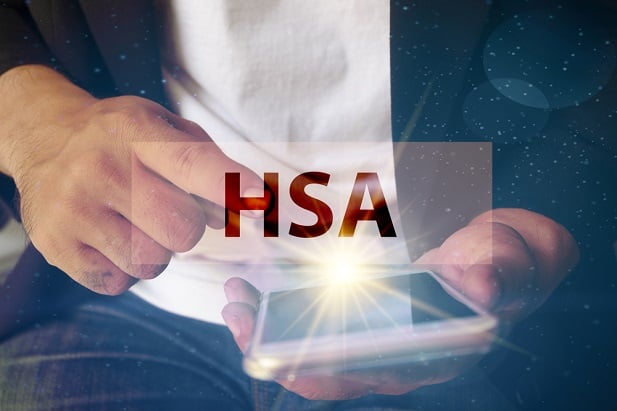The Labor Department has made it clear that revenue-sharing allocationhas to be done on a prudent and reasonable basis. Problem is, itleft it at that.
|And that leaves a lot of plan sponsors scratching their headsand wondering what is prudent and reasonable and what isn't. Chargea flat, per-head fee? Use a pro rata formula? Charge allparticipants the same expense ratio?
|Revenue-sharing in defined contribution plans has “been fairlycommon for about 20 years, but the awareness of it has only been inthe last five to 10 years or less,” said Fred Reish, an attorneywith Drinker, Biddle & Reath in Los Angeles. “The law hasn'treally caught up with that yet. So, there's no guidance for plansponsors on how revenue-sharing should be allocated.”
|Also read: MassMutualsettles revenue-sharing case
|According to a 2013 survey by Boston-based investmentconsultancy NEPC, revenue-sharing deals – used to help offset, orin some cases, to pay for all plan-related expenses – began to fallin 2010. It found that 13 percent of plans had no form ofrevenue-sharing whatsoever, a figure that most expect will onlygrow.
|Still, revenue-sharing remains part of the retirement-planpicture, as do concerns about fees andtransparency.
|The good news is that sponsors who use an objective,well-defined and transparent process for deciding how to handlerevenue-sharing probably will not run afoul of ERISA, said GeorgeRevoir, a senior vice president at John Hancock Financial Servicesin Boston.
|When the Labor Department issued ERISA Rule 408(b)(2) in 2012,it addressed disclosure of plan sponsors' revenue-sharingallocation methods, but not the methods themselves.
|“You need to have a process to understand what you're paying andwho you're paying, and then the results of that process will tellyou what (revenue) you have, and then you would make an informeddecision on how you're going to allocate expenses and fees,” Revoirsaid. “Having a sponsor make an informed decision on how they wantto do it is the most important thing.”
|In the early years of 401(k) plans, record-keepers usually keptall the revenue-sharing proceeds and thus were able to charge verylow fees.
|Plan sponsors “didn't really understand what was going on,”Reish said. “It made 401(k) plans seem very inexpensive and as aresult it helped them become popular. So, even though it wasn'ttransparent, there actually was a benefit.”
|Then, a few years ago, “because of the government's constantdrumbeat on fees and expenses, some plan sponsors began questioningthe amount of revenue-sharing that the providers were receiving.And they began negotiating reductions,” Reish said.
|More recently, providers have developed the ability to actuallytake the revenue-sharing received because of each participant's(gains) and credit that back to that particular participant'saccount,” he said. “That's called levelizing revenue-sharing orequalizing revenue-sharing profits.”
|Reish, Revoir and Philip Chao, principal at Chao & Co. inVienna, Va., addressed the issue at a workshop Sunday at the NAPA401(k) Summit in San Diego.
|Some common revenue-sharing allocation practices are unfair orcreate conflicts. Most agree that these problems arise primarilyfrom confusion, not from venality, and can be easilyfixed.
|For example, in some plans, participantsinvested in index funds, ETFs and other low-cost investments get afree ride, courtesy of participants in expensive, actively-managedfunds, Reish said.
|“In many cases, some participants are in expensive investmentsthat pay a lot of revenue sharing, while other participants are ininexpensive index funds that pay no revenue sharing,” he said.“That means the participants in the expensive funds are paying thewhole cost of the plan, and the participants in the index funds arein there for free. They are paying nothing toward the cost of theplan.”
|If one participant is in an S&P 500 Index fund and anotheris in an emerging market fund that charges 12b-1 fees, “theiraccount balance shouldn't pay for the other guy's account balance,”Revoir said. “When you look at it from a standpoint of thesubsidies, I don't think most people know it's taking place. And Ithink that if most people knew it was taking place, they'd want tocorrect it.”
|Another common problem is that some plan sponsors unwittinglycreate a conflict of interest when they act as fiduciary to theparticipants at the same time they represent the interests of thecompany and its shareholders, said Chao.
|What often happens is that the plan sponsor offers to pay anycosts not covered by revenue-sharing. The employees appreciate hisgenerosity.
|“It sounds good, right? But in reality, it's a conflict. It's aterrible conflict,” said Chao, who is a plan advisor.
|That's because the employer is also responsible for decidingwhat share classes to offer in the 401(k) plan, and he has tochoose between those that give participants the most bang for thebuck and those that cost the company the least, he said.
|ERISA “requires plan fiduciaries, when selecting and monitoringservice providers and plan investments, to act prudently and solelyin the interest of the plan's participants and beneficiaries,”according to a Labor Department fact sheet onRule 408(b)(2).
|Employers who are guilty of this conflict usually don't know it,and because they run small companies, they're often too busy tolearn the law and they can't afford to hire consultants to explainit to them, Chao said.
|Luckily, he said, they're not likely to be punished for it,“because DOL has (better things) to do than knock on doors of a10-person company and say, 'I'm going to check all your fiduciaryprudence records.' It never happens.”
|Also read: Hopefor greater fee transparency
Complete your profile to continue reading and get FREE access to BenefitsPRO, part of your ALM digital membership.
Your access to unlimited BenefitsPRO content isn’t changing.
Once you are an ALM digital member, you’ll receive:
- Critical BenefitsPRO information including cutting edge post-reform success strategies, access to educational webcasts and videos, resources from industry leaders, and informative Newsletters.
- Exclusive discounts on ALM, BenefitsPRO magazine and BenefitsPRO.com events
- Access to other award-winning ALM websites including ThinkAdvisor.com and Law.com
Already have an account? Sign In
© 2024 ALM Global, LLC, All Rights Reserved. Request academic re-use from www.copyright.com. All other uses, submit a request to [email protected]. For more information visit Asset & Logo Licensing.








